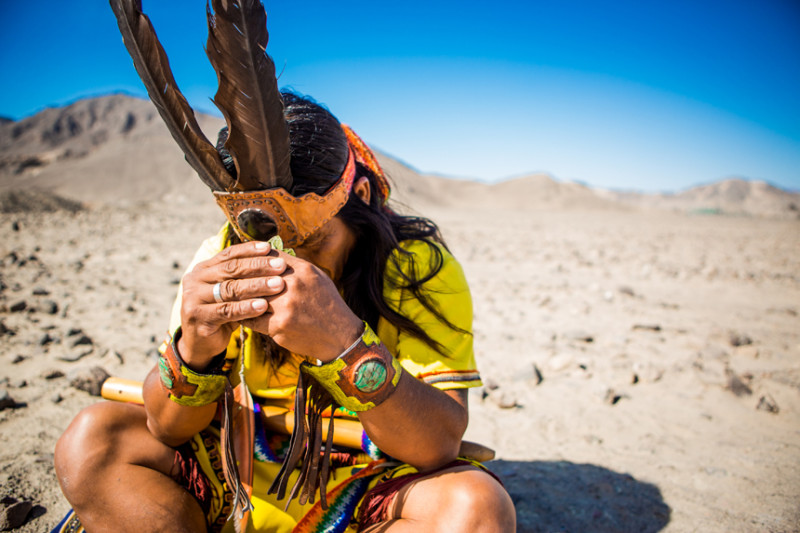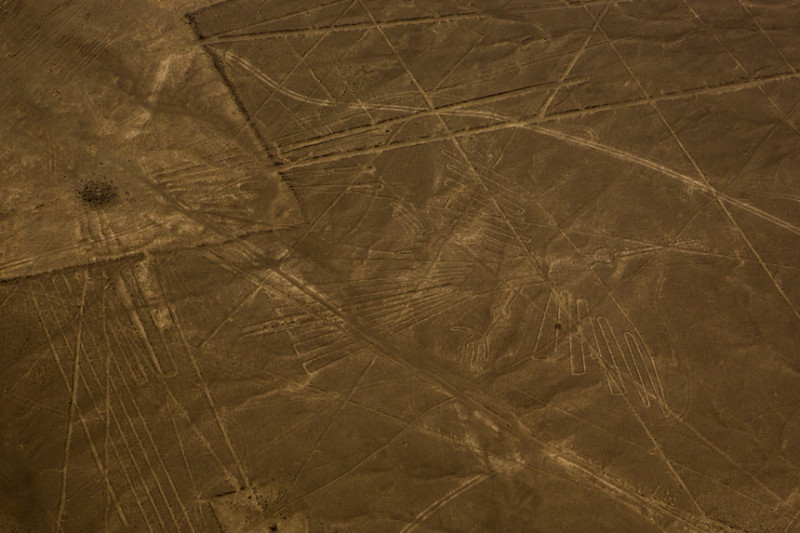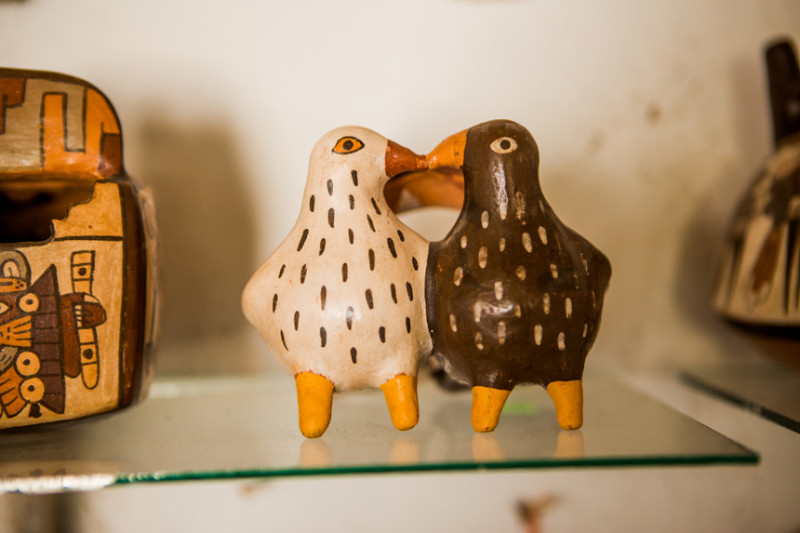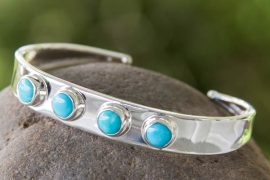Fresh from my peruvian photoshoot in Lima for Novica’s new alpaca clothing line – I couldn’t resist a quick diversion – and the chance to see the Nazca lines… one of the world’s great mysteries.
I spent a lot of time at the NOVICA office in Lima while prepping for the shoot, and one of the art forms I saw that most inspired me were the archaeological sculptures that lined the shelves in the office… especially those by Walter Jose Acosta (see above… ‘Whistling Dove’)
Walter claims that even archaeologists and indeed customs officials have been fooled by his archaeological replicas – and I believe him – they are amazing!
Little did I know that I’d be witnessing the very inspirations of his work – at first hand – right where they originated from!
When I arrived in Nazca to fly over the lines, I was greeted by a shaman named Apu-Yaku, which translates to mountain-water in Quechuan.
Before boarding our small plane, Apu-Yaku used cocoa leaves as part of a blessing to Pancha-Mama (Mother Earth), and it was interesting to see how similar Quechuan beliefs are to Buddhism or Eastern traditions.
Once we were up in our Cesna plane, we could see hundreds of designs, with some that stretched for miles. My favorite design was one that looked a man waving to the sky from one of the mountain sides.
Crop circles seem like child’s play in comparison to the ancient Nazca Lines of Peru. The lines are a series of geoglyphs created by the Nazca culture that flourished from 200-600 BC in southern Peru.
There are over 900 different designs that can be seen when flying over the Nazca Desert; some are simple geometric lines and shapes, and other are more complex animal and zoomorphic designs such as birds, monkeys and whales.
Looking back on my time in Lima, it was so amazing to think that there were still artisans such as Walter who were using the same motifs and designs to make a living… and these designs were sitting proud in people’s homes all over the world.
Historians and scholars are not in complete agreement as to the reason for creating the lines, but in general, most believe the designs had something to do with religious significance.
One of the most intriguing designs to archeologists is of a hummingbird on the top of a mountain: in order to create the bird design, the tops of the mountains had to be cut off and flattened, but there is no evidence of the missing rocks or displaced earth. Most of the designs are perfectly symmetrical, and it is almost unbelievable to imagine how the ancient people could have created the lines with the primitive tools they would have had.
And here are the lines from the ground!
After landing back on terra firma, my new shaman friend Apu-Yaku showed me around the local museum…containing the various fossils artifacts and mummies his people have collected over the years.
One piece in Apu-Yaku’s collection is a giant whale bone that was found in the desert, and is over two million years old when that region of the country used to be water. He also showed me many mummified human and animal remains.
I think Apu-Yaku could sense that me and Sarah, my traveling companion and fellow photographer were game to play dress-up…
In the same area as the museum, we were also able to see the ancient aqueducts of pre-Incan civilizations; the ducts are in the shape of a spiral and have been preserved for over 2,000 years!
The energy present in this desert and the magnitude of the lines made me so appreciative that I had the opportunity to experience them both.
To my fellow travelers and adventurers – my top 3 travel tips for seeing the Nazca lines and enjoying this amazing place would be…
- Make friends with a local shaman
- View the Nazca lines from up high to really take in their magnitude
- Study up on the culture and artifacts to appreciate the history
And above all – stay curious!


































